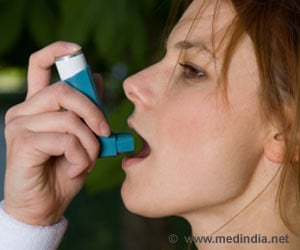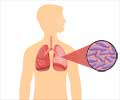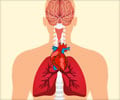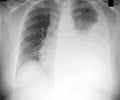Inhalers are easier to administer compared to injections and thereby reduce the work burden on the resource-strapped and understaffed health delivery systems.

‘Inhalers are non-invasive, eliminate needle based risks of cross infection and eliminate the pain associated with injectables for MDR-TB treatment.’





The history of inhaled drugs dates back to the 1940s and it resurfaced again in the 1980s. Therefore, the inhaled drug therapy for TB should not be approached with any fear and the duration to get it to commercial production should not be too long, explained Professor Anthony Hickey, a Senior Research Pharmacologist at RTI International Research Triangle Park.ADVANTAGES OF INHALED THERAPY
Dr Stefano Giovagnoli, Assistant Professor of Pharmaceutical Sciences at the University of Perugia, Italy explained about the health benefits that the inhaled therapy brings.
- Inhaled drug therapy can reduce transmission of the TB bacilli due to high airway concentration of drug delivery.
- Inhaled drugs will be administered directly to the lungs, leading to lower systemic exposure and minimal side effects.
- Inhaled dosages can be easily manipulated to be lower or higher as needed.
- It reduces cross-infection and eliminate the pain associated with injectables.
- Inhalers are easy to store and transport without refrigeration.
- Inhaled drug therapy will reduce the duration of treatment in both drug susceptible and drug resistant TB, resulting in better treatment compliance versus injectables and oral therapy.
- They are easier to administer as compared to injections and thereby reduce the work burden on the resource-strapped and understaffed health delivery systems.
- Inhalation therapy has the potential to use existing treatment regimens that are already approved by the WHO to have antimycobacterial activity, but which cannot be given systematically due to high toxicity. REVIEW:
- Prophylactic inhalers for high-risk populations, for treatment of latent TB rather than wait for active TB development. Low dosage drugs introduced in the airway may target quick absorption and minimal toxicity.
- Investigation of lung toxicity and airway sensitivity as a conduit for potentially toxic and high dose TB drugs.
- Positive impact of the therapy on the high rate of comorbidities that TB has and its linkages with other conditions like HIV, diabetes, smoking, etc. Already, these conditions have some drugs that adversely interact with TB drugs and if not, they add to the toxicity and pill burden.
- Inter-tracheal administration of TB medication may only offer protection for pulmonary TB and not extra-pulmonary TB.
On conducting a review of the opinion on inhaled drugs by professor Bernard Fourie, Professor in medical microbiology at the University of Pretoria, they found that over 92% of patients would be comfortable using an inhaler and 84% found it easy to use. However, 22% respondents did voice concerns about durability in repeated use of the inhaler and 26% queried about the safety and hygiene of the procedure.
Advertisement
Advertisement














